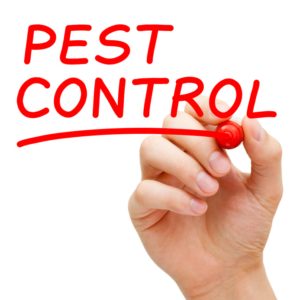 The Pacific Northwest is full of creeping, crawling bugs and spiders of all kinds. Many of these pests thrive inside human dwellings, whether it’s laying eggs, eating the wood in your home, or hiding throughout winter.
The Pacific Northwest is full of creeping, crawling bugs and spiders of all kinds. Many of these pests thrive inside human dwellings, whether it’s laying eggs, eating the wood in your home, or hiding throughout winter.
So what are the most common household pests to watch out for in Oregon? There are thousands of arthropods you can find in your home, but there are nine common species of insects and spiders that our local pest control services most often find in Oregon homes.
The Most Common Bugs and Spiders in Oregon Homes…
1. Bed Bugs, aka Cimex lectularius
Of all the pests on this list, bed bugs are perhaps the most feared. While they don’t pack a poisonous bite like black widows, or carry diseases like ticks, bed bugs are the stuff of nightmares. Like vampires, they seek out blood sources at night, literally sucking your blood as you sleep, then scurrying back into their hidey holes by day. Bed bugs love to hide beneath the baseboard of your bed, under your mattress, and in any crack or dark space, such as under bedding, behind wallpaper, picture frames, electrical outlets, and similar dark places.
These bloodsuckers will lay one to five eggs a day, and up to 500 in their life, which means a few bed bugs can quickly turn into a full blown infestation with the right food source (that’s you).
2. Fleas, aka Siphonaptera
If you have pets living in your home, then they can carry in fleas. To get rid of fleas on pets, you may need to visit the local vet. To get rid of fleas in your home, call pest control services, vacuum often, and continue using cat or dog flea control.
3. Ticks, aka Dermacentor andersonii and Ixodes pacificus
The last bloodsucker on our list is the tick. In Oregon you’ll find both the Rocky Mountain wood tick and the black-legged tick, which can carry and transmit Lyme disease. While you’re less likely to find these pests inside the home, they can be carried in by pets and mice.
4. Western Black Widow, aka Latrodectus hesperus
While most spiders actually act as pest control services, eating unwanted insects without harming people or gardens, there are two types of poisonous spiders in Oregon to watch out for. The black widow is a large, shiny, black spider with a distinctive red hourglass marking. They love to live in dark spaces in a messy white web.
5. Hobo Spider, aka Tegenaria agrestis
The hobo spider, sometimes called the “aggressive house spider,” lives throughout Oregon. These spiders like to wander looking for prey, and sometimes hide in any dark spot they can find. Because of this, they sometimes end up in shoes or clothing left on the floor, then deliver a vicious bite to an unsuspecting human. Learn more about the hobo spider here.
6. Ants, Ants, and More Ants, aka Hymenoptera
The ants you see are just the scouts and worker ants, but there are thousands more hiding in the nest, tending to the queen. In Oregon, there are a variety of house- and pantry-invading ants. By the time you notice the infestation, an entire ant colony might already be living under your floorboards.
7.Carpenter Ants, aka Camponotus
Carpenter ants are also of particular concern. They nest in wood, including the wood inside your home, making them a serious threat to homeowners. Just like…
8. Termites, aka Zootermopsis angusticollis
Like carpenter arts, termites nest in moist wood, and will eat their way through the structure of your home. Our local pest control company has developed an eco-friendly way to ward off termites, by treating wood to prevent termite colonies from taking hold in the first place. That’s a big deal, because after discovering a termite colony, the average U.S. homeowner will spend $3,000 to get rid of them. In total, termites and similar structural pests cause $30 billion in damage to buildings and crops each year.
9. The American Cockroach
Like spiders and bed bugs, the common American cockroach has a particular way of making your skin crawl. They’re gross, unclean, and extremely difficult to get rid of.
To find out how to get rid of common Oregon pests with natural, nontoxic pest control products, click here.

